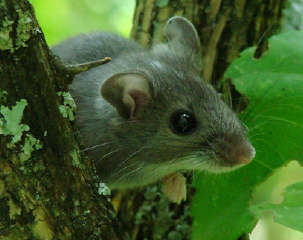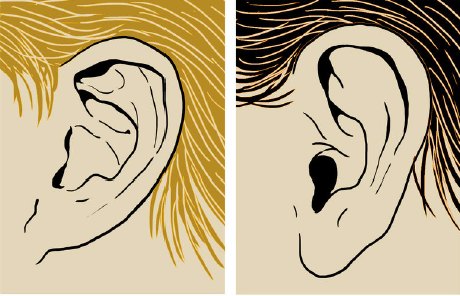Reading: Natural Selection
Jessica Harwood
Douglas Wilkin, Ph.D.
http://www.ck12.org/saythanks
• Define natural selection.
• Explain the relationship between adaptations and natural selection.
• Describe when natural selection occurs.
• Explain the relationship between evolution and natural selection.
How is this deer mouse well adapted for life in the forest?
Notice how its dark coloring would allow the deer mouse to easily hide from predators on the darkened forest floor. On the other hand, deer mice that live in the nearby Sand Hills are a lighter, sand-like color. What caused the deer mice to be so well adapted to their unique environments? Natural selection.
Natural Selection
The theory of evolution by natural selection means that the inherited traits of a population change over time. Inherited traits are features that are passed from one generation to the next. For example, your eye color is an inherited trait. You inherited your eye color from your parents. Inherited traits are different from acquired traits, or traits that organisms develop over a lifetime, such as strong muscles from working out ( Figure 1.1).
Natural selection explains how organisms in a population develop traits that allow them to survive and reproduce. Natural selection means that traits that offer an advantage will most likely be passed on to offspring. Evolution occurs by natural selection. Take the giant tortoises on the Galápagos Islands as an example. If a short-necked tortoise lives on an island with fruit located at a high level, will the short-necked tortoise survive? No, it will not, because it will not be able to reach the food it needs to survive. If all of the short necked tortoises die, and the long-necked tortoises survive, then, over time, only the long-necked trait will be passed down to offspring. All of the tortoises with long-necks will be "naturally selected" to survive.

FIGURE 1.1
Human earlobes may be attached or free. You inherited the particular shape of your earlobes from your parents. Inherited traits are influenced by genes, which are passed on to offspring and future generations. Things not influenced by genes are not passed on to your offspring. Natural selection only operates on traits like earlobe shape that have a genetic basis, not on traits that are acquired, like a summer tan.
Every plant and animal depends on its traits to survive. Survival may include getting food, building homes, and attracting mates. Traits that allow a plant, animal, or other organism to survive and reproduce in its environment are called adaptations.
Natural selection occurs when:
1. There is some variation in the inherited traits of organisms within a species. Without this variation, natural selection would not be possible.
2. Some of these traits will give individuals an advantage over others in surviving and reproducing.
3. These individuals will be likely to have more offspring.
Imagine how in the Arctic, dark fur makes a rabbit easy for foxes to spot and catch in the snow. Therefore, white fur is a beneficial trait that improves the chance that a rabbit will survive, reproduce, and pass the trait of white fur on to its offspring ( Figure 1.2). Through this process of natural selection, dark fur rabbits will become uncommon over time. Rabbits will adapt to have white fur,
Why So Many Species?
Scientists estimate that there are between 5 million and 30 million species on the planet. But why are there so many? As environments change over time, organisms must constantly adapt to those environments. Diversity of species increases the chance that at least some organisms adapt and survive any major changes in the environment. For example, if a natural disaster kills all of the large organisms on the planet, then the small organisms will continue to survive.
Summary
• Evolution occurs by natural selection, the process by which organisms with traits that better enable them to adapt to their environment will tend to survive and reproduce in greater numbers.
• Natural selection occurs when there is some variation in the inherited traits, some of these traits will give individuals an advantage over others, and the individuals with certain traits will be more likely to have more offspring.
Review
1. What’s the difference between an acquired and inherited trait?
2. Define natural selection.
3. What is an adaptation?
4. What is required for natural selection to take place?
5. How many species are there on the planet?
